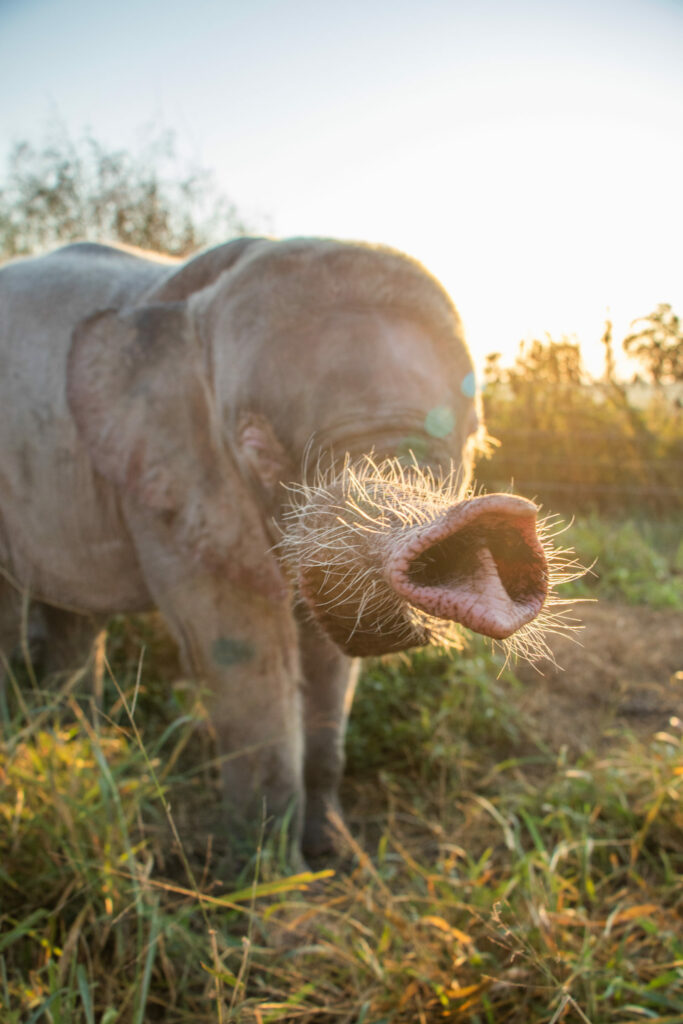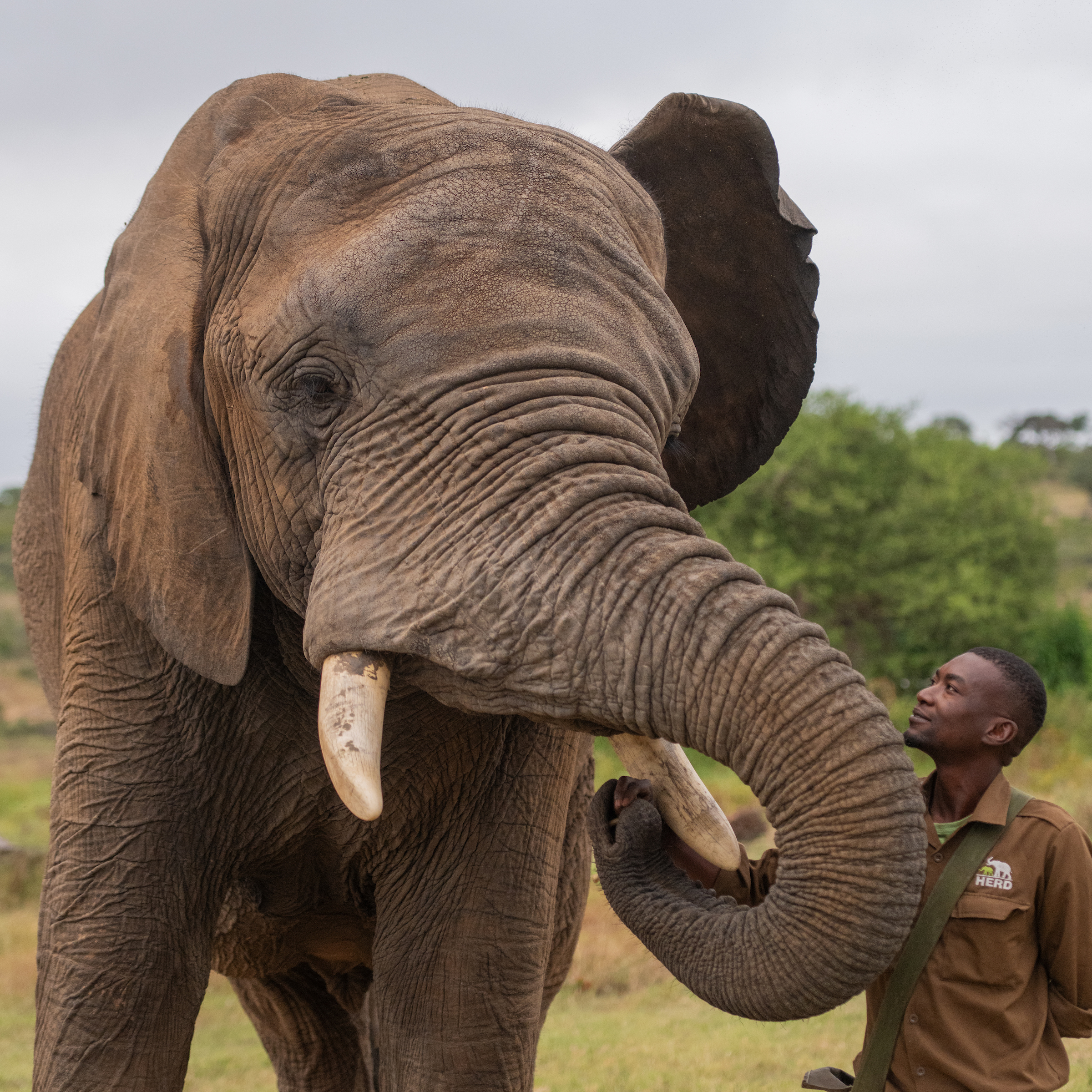The Anatomy of an Elephant – Elephant Trunks!
Sleeping Sunshine and her sweet pink trunk!
Khanyisa was born, like all elephants with an unruly and headstrong trunk, a proboscis or snout that takes its new owner some getting used to.
Interestingly, like elephants, we too as humans, use a combination of nasal and oral sounds and if you block your own proboscis while reciting the alphabet you might notice that we also speak through our noses.
Albino orphan, Khanyisa’s little pink trunk back in January.
Much has been written about the power of an elephant’s trunk, from lifting unbelievable weights to upending entire forests, but perhaps its value lies elsewhere. The one sure sign that a charging elephant is serious is when they tuck their mighty trunk safely out of the way and so, not only does young Khanyisa need to master its mysteries, she also needs to treat it with the respect that it deserves.
The muscles in an adult elephant’s trunk gives the animal incredible control for when they’re picking single fruit with the two ‘fingers’ at its tip, swimming in the dam and using the trunk as a snorkel or lifting a young elephant from the mud.
The trunk is to the elephant what necks are to giraffes and hands to primates, helping it to acquire food. But it’s far more sensitive – what with their thousands of whiskers that are sensitive to the slightest touch, with nerves directing messages to the brain. It’s believed that the tip of the trunk is 10 times more sensitive than a human finger.
Khanyisa’s whiskery pale pink trunk.
Elephants also use their trunks to greet, console, touch, stroke and caress.
You may have seen them putting their trunks into their own mouths after sniffing around another elephant or dung on the ground. This method of obtaining information is known as the Flehmen Response and is common in many animals. The trunk tip is used as a chemical receptor – allowing them to obtain chemical information about other elephants.
They touch the trunk tip against a substance, like urine, faeces or temporal gland secretions, the trunk tip is then pressed against the roof of their mouth to the vomeronasal or Jacobson’s organ where the chemical is analysed for the information it possesses.
Without doubt, the elephant’s trunk is one of the most curious, multi-tasking and fascinating of earthly creations and yet another tool in the deep bonding and complex social life of elephants and the ensured survival of the herd.
READ MORE >
Hugs & Handshakes, Elephant Style ~ A Tale of the Trunk!
The Silent Language of Elephants & Other Animals ~ The Jacobson Organ







The Incredible Sight of Swimming Elephants – Jabulani
[…] trunks are phenomenal for many reasons but while watching them beside the coolness of a dam, drinking from […]